Virtual Reality is a technology that has been around for a few years now, and yet it has not stopped improving since its creation, in terms of graphic quality, usability, portability, interactivity… Technology is the vehicle that has allowed it to move forward, evolving with regard to screen resolutions, motion sensors, graphics processing power…
But all this technique and technology per se would not be so valuable if we did not know how to use them correctly. And, beyond the entertainment of video games and the consumption of multimedia material, there are applications of virtual reality that allow us to enhance the user experience in many fields and in different ways, if we know how to do it correctly.
In this article we will give you 5 essential tips to consider if you are thinking of introducing virtual reality into your relationships with your customers, if you want to get the most out of it and improve your conversions, whatever indicator you use and best suits your particular business.
The 5 keys to applying Virtual Reality to the User Experience
Let’s summarize 5 tips for combining virtual reality and user experience below. It should be borne in mind that these tips are related to the use, integration and optimisation of the technology itself, and should therefore broadly be valid for any type of situation. There may be peculiarities relating to each type of business, but I will try to present these 5 points in the most practical way possible, so that it is easy to extrapolate their advantages for different industries, sectors and applications.
But, before this, it is worth mentioning an important aspect: it is very common to find experiences that are considered virtual reality, although they can even be enjoyed without glasses of any kind, but simply on a computer, tablet, smartphone… through its screen, with 3D graphics that simulate a certain «reality». In this case, as well as if we are using VR glasses, we can apply most of the points that are exposed in the article.
Now we’re ready, let’s get started!
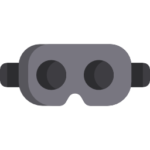 1. Get to know the different types of Virtual Reality that exist
1. Get to know the different types of Virtual Reality that exist
When we talk about Virtual Reality, everyone imagines it in a different way. A few years ago it was perceived as very futuristic, and it seemed that we would have to be «plugged» into a machine, like in the Matrix, to experience VR. Time has passed and we now have a clearer idea of what it is all about, but there is no unified approach to how this experience can be enjoyed.
In the market we have different virtual reality equipment, with different features, and that are intended for different uses. It is not the same with cardboard glasses as it is with equipment with an integrated screen connected to your smartphone, or with equipment that is directly connected to a computer and has beacons for free movement. Let’s get to know these different types a little better.
Google Cardboard type glasses
These glasses are the most basic and affordable. They basically consist of a set of lenses within the frame that supports the VR experience. In this case, our smartphone will be the screen and the brain of the system, so that by inserting it into the front of the glasses, in split screen mode, we can get a VR experience that responds to the movements of our head. We call them Cardboard in reference to the glasses that were made so popular thanks to the cardboard model that Google launched a few years ago, although there are much more comfortable and well finished models in the market.
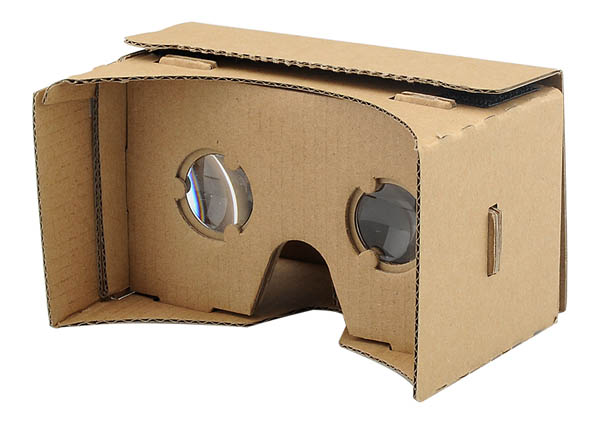
They are cheap glasses, because they don’t usually have any kind of electronics, only optics. The problem is that you depend on your mobile phone (and its power) for games and applications. This means, on the one hand, that the technological complexity is limited, and that it is not possible to use very graphically demanding games, for example. Nor does it have as complete a possibility of interaction as other alternatives. But, on the other hand, they are a very interesting option to consume multimedia content, or enjoy 360º experiences, at a very low cost.
And because it doesn’t have electronics, it doesn’t need to be plugged in to charge (as long as your phone has battery), or to sync with a computer.
The price of these glasses can vary from $10 to $100, depending on the comfort and quality of lenses we want, although for about $25-30 you can find very interesting models. One of the most representative that we could frame in this segment are the Google Daydream, although they have some characteristics that bring them closer to the next group of stand-alone glasses (for example, the remote control that they include). These are very comfortable and well-built glasses, with an approximate price of $50. In addition, its latest version incorporates Fresnel lenses, which provide better image quality and greater adaptability to the eyes of different types of people without the need for adjustments.
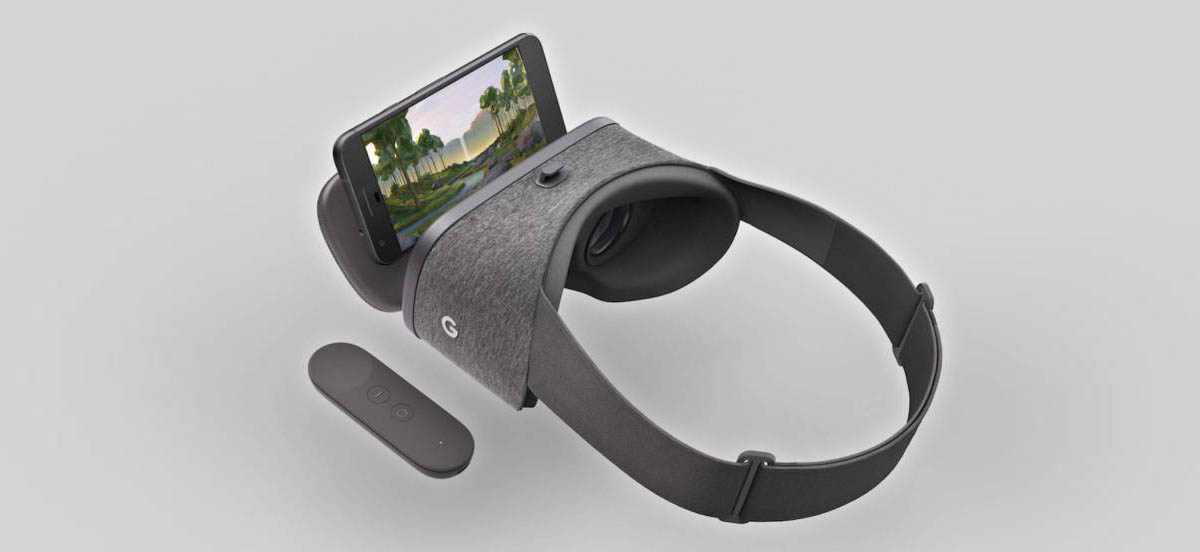
Stand-alone glasses
The stand-alone glasses are self-contained systems with optics, electronics and display in one body. This has advantages, such as the graphic quality that their displays usually offer (perfectly adapted and calibrated for the optics that accompany them), a more immersive audio in some cases, and optimized remote controls.
However, they also have their drawbacks, among which are their price (much higher than that of basic glasses), or the fact that we have to remember to charge them when we want to use them, because they will no longer depend on our mobile phone. They have their own operating system, which means that we must keep them updated as long as they can be. But there will come a point when the manufacturer will stop offering updates for our glasses, and we will have to look for new ones, without being able to take advantage of the optics or construction of the ones we have.
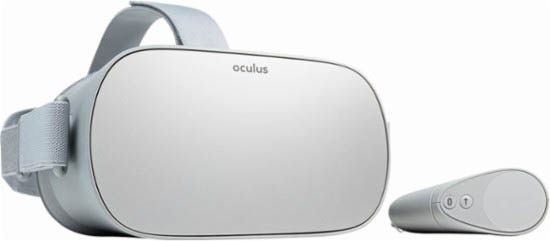
An example of such equipment would be the Oculus Go, priced at approximately €230.
Complete systems
The third variant would be that of complete virtual reality systems, such as Oculus Rift or HTC Vive, for example.
These systems offer very good visual quality (the new models will already incorporate screens with resolutions higher than FullHD) integrating not only screen and basic electronics, but also motion sensors that, thanks to some external beacons, allow more freedom when it comes to interacting with the machine.
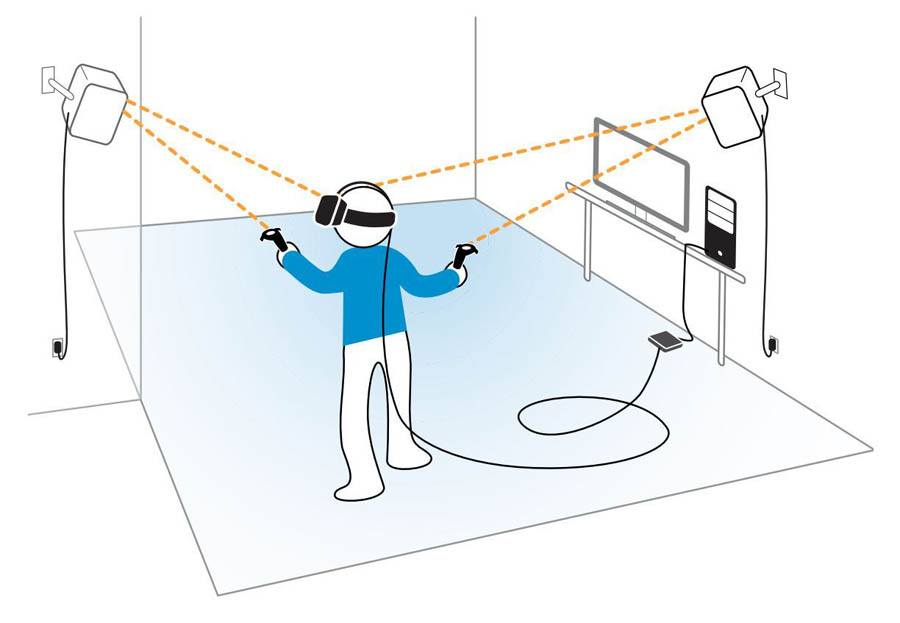
They are able to represent scale scenarios, so that we can move around our room as if we were walking in the virtual world, with high precision. In addition, its remote controls are more advanced, and allow for much higher levels of interactivity.
But the graphic quality they can achieve has one drawback: we need a fairly powerful computer to run the most demanding games and applications. In addition, until now, it has usually been equipment with a less simple configuration, and with more cables than the aforementioned glasses. This is why, in some specialised VR experience centres and leisure parks, you can enjoy these experiences with «backpack» computers which, when hung behind your back, give you much more freedom so that you don’t have to worry about tripping over cables.
hese systems are more expensive than the previous ones, so that for example the HTC Vive systems, which have been on the market since 2016, cost around 650€.
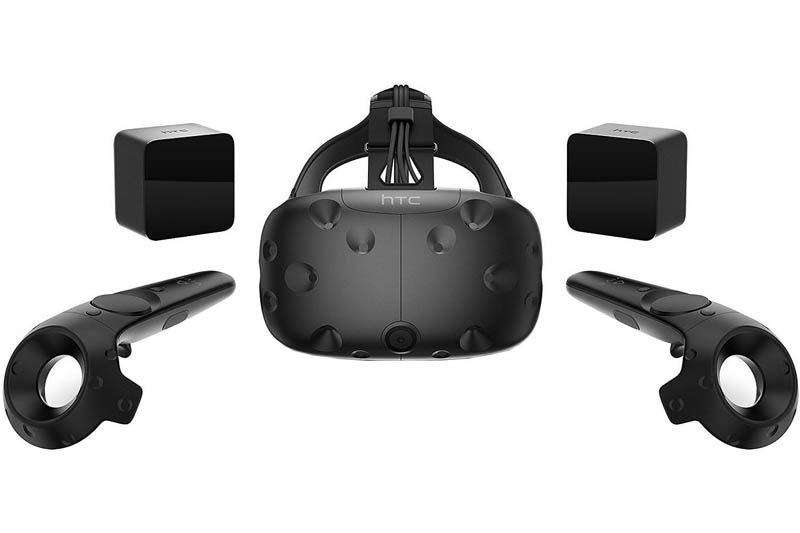
There are other complex glasses, more advanced (and more expensive than the previous ones), which are the Microsoft HoloLens, but which are designed mainly for Augmented or Mixed Reality rather than for Virtual Reality, so we will leave them out of this analysis.
There are more basic and more complex VR glasses, and the choice of the right platform will depend on the level of realism, immersion, interactivity and range you are looking for
As a common factor to all the types of glasses mentioned above, it is worth mentioning the importance of the resolution of the screens. As they are so zoomed in and so close to our face, it is very easy to see the pixels that make up the image, which can be somewhat uncomfortable and tiring for our eyes after a short time. That’s why the newer models (we’re talking about stand-alone glasses and complete systems, because in the basic ones the screen is our mobile phone’s screen) incorporate higher and higher resolutions, as well as faster screen refresh rates and low latency in relation to our orders, to achieve a fluid sensation of movement and a clear image without being able to see the pixels (so clearly, at least).
The following table shows, as a summary, the main characteristics of the systems discussed.
 2. Define which type of Virtual Reality fits your users’ experience
2. Define which type of Virtual Reality fits your users’ experience
All right, now you know the types of glasses you have available, and the characteristics of each of them. It’s time to consider which one best suits what you want to offer your users.
Depending on the desired immersion
A key factor will be the final immersion we want to provide the user. For example:
- If you’re looking to deliver a multimedia streaming experience, for example through 360° views and videos, basic glasses would be more than enough. They offer good quality for this, keeping the cost to a minimum. If it’s important for you not to have to rely on a mobile phone and carry all your equipment in the same body, you should go for stand-alone.
- On the other hand, if you want to offer maximum immersion, and let the user walk in a virtual world using their hands as naturally as possible with advanced remote controls, you should go for full VR systems, but the cost will be higher, and the logistics more complicated.
Depending on the environment where it is enjoyed
The most common thing is to create experiences that users can enjoy in their own homes, and for this reason it is normal to opt for developments for basic glasses, because they are the ones that most users have at hand, or the cheapest to buy if necessary. It wouldn’t make sense, for example, to create a product that can only be enjoyed using HTC Vive, for the simple reason that very few users have this equipment at home (unless you specialize in advanced VR game development, of course).
However, if you have a physical establishment where you are considering offering some kind of experience, it may make more sense to opt for complete advanced solutions if you want to ensure the greatest possible impact, bearing in mind that you will be offering that experience in a controlled environment that you can set up ahead of time, and that you will not require any further versatility in that regard.
If we talk about specific application cases, there are several sectors in which the use of Virtual Reality represents a new paradigm in terms of UX (User eXperience). Thus, for example, the world of interior decoration finds in virtual reality a perfect showcase to promote the latest trends. If a decoration company wants to offer this to its clients, it will have two options: to do it via web or heavy application, so that the clients can enjoy it at home with basic glasses, or to create complex simulators in its stores, for example, that allow the client to move freely in a 3D environment to see (for instance) how one kitchen or another looks like.
The security sector is another great beneficiary of virtual reality, because it allows us to have control centers with dedicated equipment for infrastructure supervision, recreating an environment as if we were inside it, and being able to use both complete equipment and basic glasses, depending on the case.
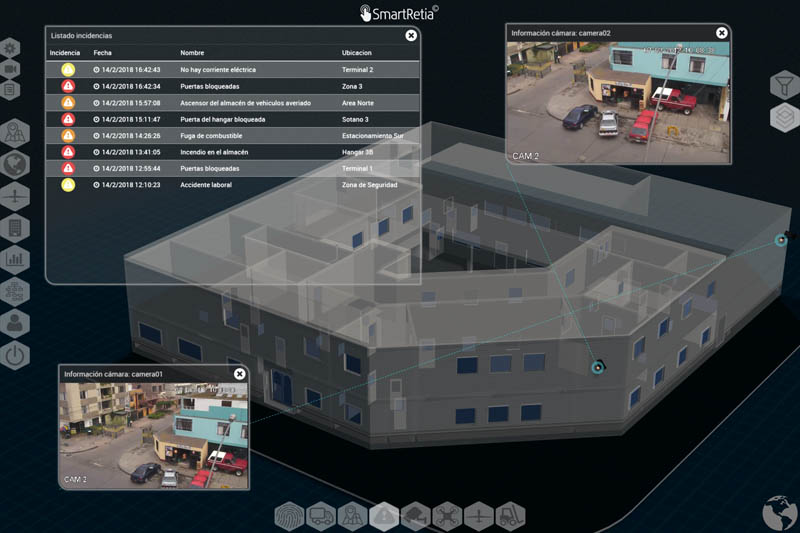
The automotive industry has found in virtual reality a perfect tool to offer personalized experiences to customers. Nowadays it is not unusual to find apps that we can download to our smartphone in order to experiment inside a certain model of car and, therefore, it is logical to think that the experiences destined to be used with basic glasses are the most common.
Another sector to consider that is betting heavily on virtual reality, and in which there is still a long way to go, is fashion. Let’s think for example about being able to see in virtual reality how a certain outfit would look before buying it, or even having virtual meetings with our friends so that we can go shopping online together, this being more of a social act than a simple commercial transaction. In these cases, if we are looking for maximum penetration, we should bet on technology that we can enjoy in basic glasses, so that the user in the comfort of their home can take advantage of these experiences.
There are countless other fields in which the application of virtual reality represents a change in the paradigm of customer relations. But one of those that has seen its scope and repercussion enhanced the most has undoubtedly been that of more general marketing. Of course, by applying virtual reality to customer relations in any industry, we are actually influencing its marketing. But this field itself has found in virtual reality a gold mine for specific commercial actions and advertising campaigns that seek to achieve the greatest possible impact on the customer’s mind.
One of the best known examples is McDonald’s, with its Happy Goggles. The idea was to transform the box of his Happy Meal into virtual reality glasses, so that the children could enjoy a VR game with a mobile phone and these makeshift glasses. A fun way to use this technology, which influenced Happy Meal orders as you can imagine. In this example, McDonald’s chose a very simple VR device, designed to be enjoyed in the restaurant itself in the simplest possible way, and with a look and branding adapted to the audience that was going to enjoy it: children.
Depending on the desired realism
Deciding what kind of content we are going to offer through virtual reality will also be a determining factor. Broadly speaking, there are two general trends: that of the most schematic or minimalist representations, and that of photorealism and complex graphics. Let me give you some starting advice on this point: it’s best (usually) to avoid the middle ground; if you’re looking for something realistic, bet on quality, because, if you’re halfway through, the result may look like a low-budget video game from a few years ago, and that’s usually something to avoid (as I say, generally speaking).
If you choose minimalist representations, you won’t need a very powerful computer to move the graphics displayed, even if they are pure 3D. This means that, if the interactivity you need allows you to do so (if you don’t need advanced control or positioning in 3D space using beacons), you can choose the most economical solutions: basic glasses or stand-alone.
If, on the other hand, you need more realistic graphics, you have two options: to base your experience on immersive views and 360° video, or to have real, volumetric 3D. In the first case, again, you will only need to have basic glasses to meet your needs, as the processing required to move that type of content is low. However, if you need to move realistic 3D graphics, you’re going to need a powerful computer, and superior glasses like HTC Vive or the Oculus Rift (don’t mistake them for the stand-alone Oculus Go).
Below is an example of the difference between a minimalist and a more realistic environment. You can slide the central control to see the result:
Thinking about some of the examples mentioned above, if we are talking about fashion, you should have realistic graphics of the clothes you want to sell, for example. Depending on the other elements you represent, you can do this on a basic computer if the scene is not complex, or will require an advanced computer, if you have many polygons, textures… and, especially, if you need a complex movement within the scene.
In cases such as the security of facilities, it is usually sufficient to have schematic representations of buildings, which allows you to view them with basic equipment, and even to integrate it directly into the web.
 3. Think about how your business can take advantage of Virtual Reality
3. Think about how your business can take advantage of Virtual Reality
Does it make sense for all businesses to make use of virtual reality? That’s like wondering if it makes sense for every business to have, for example, a YouTube channel. The idea is for these technologies to add value. And, in our case in particular, that they provide value to the user by improving his or her experience in some way that results in an advantage (of any kind) for the company. The application of virtual reality in itself has no such advantage if we do not know where and how to integrate it into our strategy.
Thus, there are different points in our relationship with customers in which it may make sense to integrate a VR experience. In general terms, those points can be summarised in the pre-sales, sales and after-sales processes (as well as in the use and exploitation of the product or service itself, when based on VR experiences, such as some security systems already mentioned).
The approach to the VR experience that we want to offer to the client depends on where in our interaction with him we want to include it; this will help to define the content and the format of what we want to show.
Pre-sales
In pre-sales, you’re risking capturing a customer, or letting them get away (and even losing them forever if they have a negative experience). It is therefore a critical time when offering the best possible experience is a requirement, rather than an option.
Therefore, if we decide to introduce virtual reality at this point, we must be sure of two things:
- We can bring some value to the customer and facilitate a conversion, thanks to offering a new point of view about our product or service.
- We’re not gonna mess it up.
And how can VR help us in this case? Well, the most normal thing is that it allows us to offer a different point of view of our product (or service), either because:
- It is a more graphic representation that helps to show the aesthetics and details of something visually.
- And/Or because it allows us to show the practicality of what we offer.
- And/Or because it is a fun or intense experience that makes it easier to engage with the customer.
- And/Or because it allows us to explain complicated concepts more easily.
In any of these cases, the most important thing is to resolve any possible doubts the customer may have about our offer, to do so in the most practical way possible, and not to lose the customer due to a complicated, messy, or simply low-quality experience that has the opposite effect to the one we are looking for. Below is a screenshot from Emirates’ website Experience area, where 3D SeatMapVR provides both the 3D representation of the elements and more specific on-screen information about certain aspects.
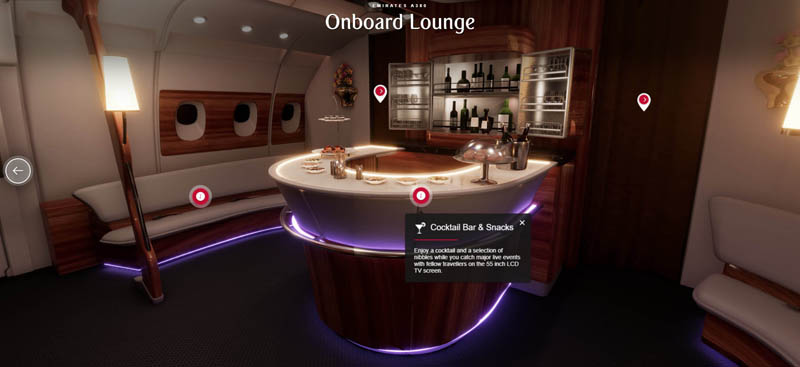
Let’s think about the example of fashion. If we were to represent clothes and accessories on a mannequin, but we couldn’t get them to really suit him, or if we couldn’t show in some detail the type of fabric of a shirt, the real colours of a dress… We would really be doing our marketing strategy a disservice.
It happens the same way with the example of cars. If we were to get a claustrophobic feeling when representing the interior, or if the materials seemed to be of lower quality than the real ones, we would be giving the client reasons not to buy it. Hence the importance of having experienced companies that know how to take care of all these aspects when looking for a development of this type. Our 3D SeatMapVR software is an example of the care that must be taken in these details, although we will review it at the end of this article as a paradigmatic case of these considerations.
In any case, even though we have to avoid unnecessary complexity, we can still afford to adorn the VR experience more than we would do in the sale itself, with an interface that (for example) offers more information about something, or that is visually richer than strictly necessary (without overdoing it). And, if what we are looking for is to make an impact before the sale, especially if we have the customer with us (and it is not an experience that he is enjoying directly at home), we can risk making him live real adventures if we know how to manage them correctly. A very famous example of this is North Face, with its extreme weather immersion experience, including surprise (where surprise is more important than the VR experience itself…):
Sales
In the case of the sale based on VR solutions, the effort has already been made, the customer has already been attracted and is willing to buy, so the main thing is not to ruin that willingness.
Here it is usually recommended that the transition from pre-sales to sales is as smooth as possible, even in the same environment, and without the need for the user to remove the glasses to, for example, press the «Buy» button (in the case of a virtual reality experience with glasses, instead of just a 3D experience on a computer). The design of an optimized user interface is absolutely critical.
Users are generally reluctant to «change our habitat«. It is difficult for us to go from not wearing our glasses to wearing them, and from wearing them to not wearing them, because it causes us some kind of «micro-laziness», even though we are often not aware of it. This small change of environment, although psychologically subtle, is something that we want to avoid as far as possible even though it lasts only a few seconds, because, among other things, it is a dead time (which, according to the person, can be considerable), in which we are not really interacting with the customer effectively. We are simply waiting for the end of the environment transition and for the user to get «acclimated», in order to continue with the sales strategy.
The following screenshot shows an example of the look of the «Book this seat» button in VR mode, which would work by simply moving your head and focusing on it (without the need to take off your VR glasses), in Emirates seat selection with 3D SeatMapVR.
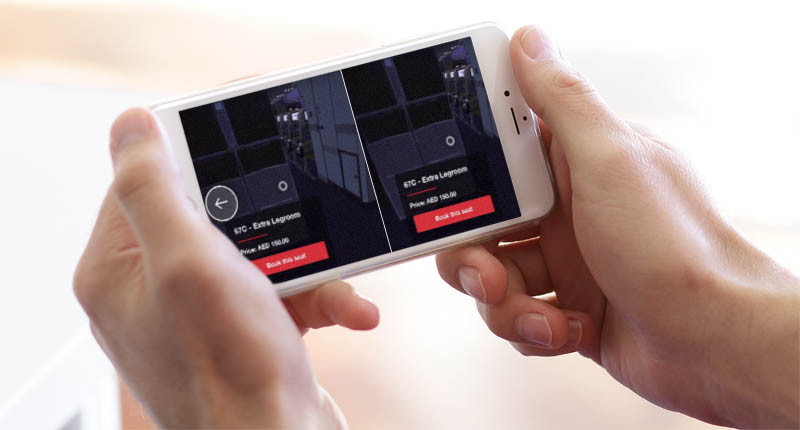
In this case, and also to a large extent in the case of pre-sales, it is vital to take care of the usability of our VR experience. We will have to be very clear about what types of CTA (Call To Action) we are going to show, what flows the user’s experience will follow, what inputs and outputs we will have between each scene of the virtual environment and how we will use virtual reality to show the customer several alternatives of the same product during the purchase (different colors, different sizes, different materials of something), show complementary products (cross-marketing) or highlight the services that something has associated, for example.
Nor should we forget accessibility, which will allow a greater number of people to enjoy the VR experience or learn about the content being displayed, even if they suffer from some kind of disability, thus making it as easy as possible for them to purchase and eliminating existing barriers. It is something that is positive for both the client and us, and that involves a series of considerations to be taken into account, such as maintaining correct navigation between the screen elements using the keys, preparing the content so that screen readers can interpret it correctly, etc..
After-sales
After sales is the other great moment when we can take advantage of virtual reality, and for something absolutely fundamental: customer loyalty.
Relationship marketing bases its strength on the value that a loyal customer has to the company, who identifies with it and who values it beyond the product or service it offers, as opposed to transactional marketing.
To this effect, again, virtual reality can be a great ally. But if we have already sold the product or service, what can we do? Many things: we can sell maintenance, for example. We can sell product extensions, we can sell warranty extensions, complementary products… We can even allow changes to the product sold, as is the case with the airline tickets we will see.
But, beyond that, we can listen to customers, and create experiences that allow them to give us feedback on what we have offered them, in a very graphic way. Or, simply, we can «reward» them with something fun, to remind them of us, to associate us with good experiences, and to look forward to coming back to us, which is really where we would be applying relationship marketing (as in the example of McDonald’s Happy Goggles).
The after-sales service is a great playground for experimenting, innovating and making the user see that he has not made a mistake in trusting us, quite the contrary. And sometimes we forget that we are all people and we like to have fun, so why don’t we make fun experiences for our customers?
 4. Analyze how to improve your profits with VR and user experience
4. Analyze how to improve your profits with VR and user experience
If we have achieved the goal of creating experiences that add value to the user, this will most likely result in greater benefits for our company. This can be achieved in several ways, complementary to each other.
Increase in sales
First, the most obvious way to achieve this is to increase our sales. To this end, virtual reality is an ally that will allow us, in particular, to increase conversions. It is not a technology that will help you reach more users (it is not a technological vehicle that has more penetration than smartphones, personal computers, tablets), but it will allow you to engage with them to a new level, if you know how to create the right experiences. Think strategically about what can make your client’s mind pop: do you have a business related to sport, adventure, physical activity? Surely you should opt for adrenaline-boosting experiences – do your customers simply need to find the right information about what they’re buying? Then offer them something very visual, with extended information, where they feel part of the environment and can explore your product or service naturally.
Each case is, as you can see, different. What is common is that you will need to tailor the experience to the customer and the product or service you offer. Once you do this, you will certainly increase conversions and increase customer loyalty.
Reduction of costs
Another way to improve our profits is, of course, to reduce our costs. And how can virtual reality help us do that? Because it allows us to represent information as visually and realistically as possible, it will allow us to optimally show what we want, saving us, for example, product samples, customer interactions in the form of calls and e-mails to explain something that the customer can see in VR, physical space for product showrooms, time of arrival to the customer, etc.
There are many possible examples of these savings. Think of an art brokerage, or an artist looking to sell his or her works, or a gallery that wants to exhibit them (do you remember Google’s Open Gallery?) What better way to arouse the interest of the agents involved than by creating a virtual gallery in which we can see those works, and contact the organizer, the gallery owner or the artist? By doing this (which, of course, can then lead to the actual work being shown) we will be saving ourselves the costs of renting a gallery, or at least we know that we can invite people who have already shown an interest in the work or the artist, after a virtual tour. The following is a basic example of a gallery of this type, which allows us to look around 360º to see the work we prefer:
Another example would be that of VR automotive experiences. We can take a virtual vehicle to the customer’s home, and make them feel like they’re in it, even months before it goes on sale, and without having to have the physical vehicle or space at the dealership to display it. In addition, to top it off, the customer could configure the color, interiors, equipment… so it’s like showing him 10 cars in one, at a much lower cost than doing it in the physical world.
These savings are usually implicitly associated with staff savings (commercial, especially when we talk about pre-sales and sales), since a virtual assistant or a chatbot can perform a first explanation of the product or service and resolve initial questions, with full availability both hourly and geographical, on the user’s own smartphone for instance. This will hardly replace a good salesperson, but it will save you time in interactions to provide basic information, and allow you to receive customers who already have an initial knowledge of what we offer, for example.
Management of customer expectations
Although this concept will in turn lead to increased sales and reduced costs, I found it particularly interesting to discuss it independently because of its importance.
We’re all clients of some company. And we all expect something when we buy a product or service; we have expectations, a level of quality, functionality, appearance, comfort, attention, service… that we expect to obtain.

When those expectations are met, we are satisfied that we have made the right choice. On the contrary, when this does not happen, we can feel frustrated, dissatisfied, and sometimes almost «betrayed» by the brand.
Expectation management is one of the most important advantages of the integration of Virtual Reality into the user experience, and involves, among other things, a reduction in complaints and associated cost savings
Thanks to the combination of virtual reality and user experience, it is more unlikely that a user will imagine a product or service that is more distant from reality, because we will be showing them a more faithful representation (especially if we work with photorealistic models) of it. The immediate consequence will be that we will see a reduction in user complaints, because they now know better what they are paying for. By improving their experience, in addition to obtaining more loyal and committed customers, we will be doing ourselves a favor, as we will be able to reduce the resources allocated to the management of user complaints, compensation for them, physical office space… Not to mention the improvement in our business reputation that this can bring. We’re looking at a real win-win tool.
 5. Think about the users, what brings them value?
5. Think about the users, what brings them value?
As I mentioned before, we are all users. Put yourself in your customers’ shoes. What are they looking for? What would add value to their experience? This is about focusing your efforts on what they will really appreciate (even without realizing it).
Imagine you sell clothes online, and create a virtual reality website, which allows you to see the items in 3D… Do you want those beautiful shoes to be seen in their true colours, or can they be distorted?…Do you need to add floating information for the user about the material of each part of the shoe, and make an animation in which the different pieces are merged to create the final item?…Do you want the user to see a holographic view of the item?
Each reader will probably answer these questions in a different way, but it is to be expected that a large majority will opt for a very real representation of the object, maintaining colors and shapes, without complicating themselves in adding a great deal of detail that clouds the experience, or advanced interactivity. If your client is looking for original shoes, and you have them, show them the best you can, and put your effort into it, unless you know that your clients value very positively the knowledge of each particular material used, and enjoy interacting with the parts of the object, for example (which could very well be, who knows!).
Perhaps what your client values is the ability to customize the result, and this is one of the cornerstones of the value of virtual reality. You have in your hand (or, better said, you put in their hands) the possibility of seeing and interacting with objects that, many times (although not always), can be modified in terms of shape, position, colour… If this is the case, and if what you sell is likely to admit personalization, do not hesitate and offer that possibility, because it will probably be one of the aspects that your customers value the most. As an example, below you can see the difference in appearance between the cabin of the Emirates A380 depending on whether we activate or deactivate the night lighting, which is a possibility given to the passenger when visiting the interior of the aircraft with 3D SeatMapVR (drag the central slider to see the difference).
Another clear example of this is the world of interior decoration. Imagine going to a furniture store where they only sell two types of sofas and two types of chairs. You’d hardly end up finding what you’re looking for there. Now, imagine creating an application (heavy or web) that allows you to recreate a living room and add furniture to it, but only let you choose two types of sofas and a couple of chairs. Well, it’s exactly the same: you’re limiting the user’s possibilities, in a virtually unlimited universe.
The key is customization: whenever possible, give the user the ability to choose, customize and adapt what they see to what they really want
By allowing the user to contemplate more possibilities, on the one hand, you will be maximizing the opportunities for them to find what they are looking for, but you are also giving them the possibility to choose, which in itself will improve their user experience and make them more willing to make a purchase. And this, of course, also applies to the world of services, not just products.
The microcontributions achieved by a huge number of users who, thanks to personalization, can find exactly what they are looking for, are the basis of the idea of Long Tail, a fundamental marketing concept that you should not forget in your sales strategy.
 Practical example: 3D SeatMapVR
Practical example: 3D SeatMapVR
There is nothing better to briefly summarize the concepts presented so far than to do so by means of a practical example. In this case, we will talk about 3D SeatMapVR.
This software is a visualization engine that provides 3D 360° immersive views from the specific seat chosen by a user when booking a flight ticket. Below you can watch a video to learn more about how it works, in a very graphic way:
Based on this basic concept, the following differential elements were defined in the conception of the product and would form part of its DNA:
- This experience must be integrated into a booking process. This has some consequences:
- It must be a web experience, so that the user does not have to download any app or plugin to enjoy it, but is directly integrated into the purchase process.
- As booking is a critical process, it must be compatible with as many devices as possible. Thus, the experience must be enjoyed on a PC as well as on smartphones, tablets and VR glasses.
- Since it is in the interest of reaching the largest number of users, it would be pointless to develop it thinking of complete equipment such as HTC Vive. To enjoy 3D SeatMapVR in fully immersive mode you only need basic Cardboard glasses (although, as we say, it can be used with all its features also on PC and smartphone).
- As the aim is to represent the interior of the aircraft as accurately as possible from the passenger’s position, special attention is paid to all visual details in terms of materials, textures, sizes, distribution… It would not be valid in this case a simply schematic view of the plane that does not provide more information than a traditional 2D seating map, but instead it tends to photorealism.
- Given that booking a seat can be a complex process, a version is developed for booking in which the user interface is as clear as possible, while there is another version for the typical sections of «Experience», «Meet our fleet», etc., with interactive functionalities such as hotspots, which provide more information on the elements. This, of course, is something open that can be adapted to each airline.
- Customization is obtained in two different ways:
- On the one hand, by allowing the passenger to select any seat, so that they know exactly what to expect once they are on the plane.
- In addition, other types of possibilities can be added, such as displaying the ambience day or night, even changing the content displayed on the aircraft screens.
- This improves the airline’s profits both by increasing the sale of special seats, premium seats and upgrades, and by reducing its costs, especially arising from possible complaints from passengers when they pay for a seat and get something that does not meet their expectations. It is also an important marketing tool, as it offers an innovative experience that passengers enjoy using..
- The final focus is on the passenger, who sees an added value in the information he receives, as he does not now buy his ticket blindly. Now you know what your seat looks like, where it is, what materials it has, what plugs and connectors it has, what in-flight entertainment system it has, its position relative to the rest of the cabin’s elements, etc. As we say, it’s a radical change in the booking experience, which can now be even a bit of fun, rather than just a simple formality to buy a ticket. It is now possible to understand why one seat costs $50 more than another, how much more legroom is offered, or what services are included in a particular class.
I hope you find these 5 tips to applying Virtual Reality to the user experience useful, and that you will see more clearly the different aspects that you must take into account when combining virtual reality and user experience in order to get the most out of this technology.
And, of course, if you have a virtual reality project in mind, and you need an experienced technology partner to guarantee your success, don’t hesitate to contact us! We look forward to hearing from you.
Note: Some of the images in this article are owned by Google, Facebook, HTC. The icons shown in this article come from Flaticon and are used under license with attribution to their authors:
Airplane icon: Icons made by Pixel Buddha from www.flaticon.com is licensed by CC 3.0 BY
Rest of icons: Icons made by Freepik from www.flaticon.com is licensed by CC 3.0 BY

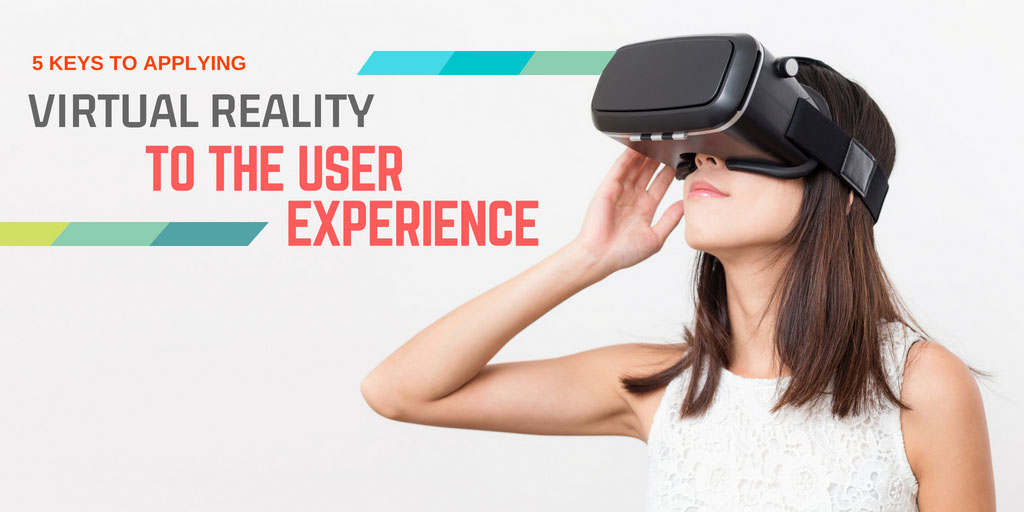
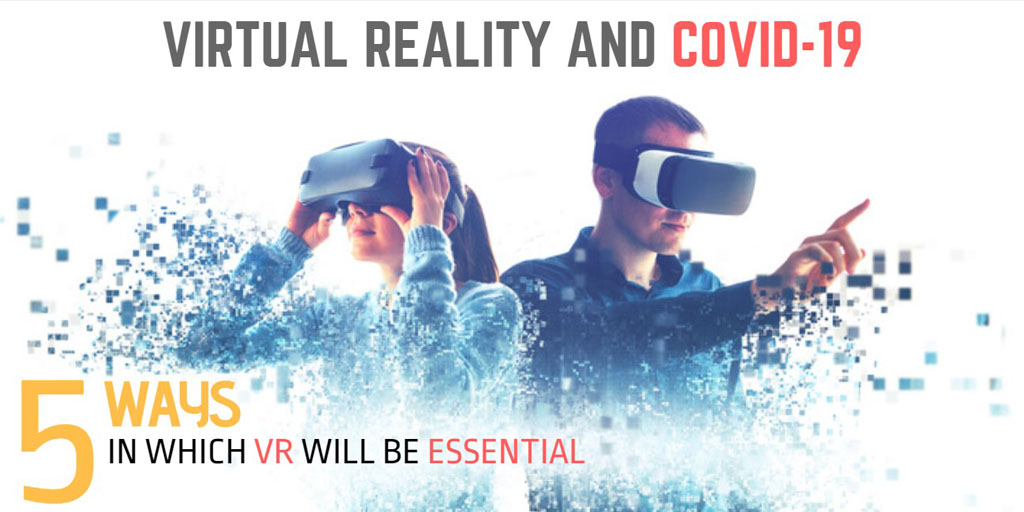
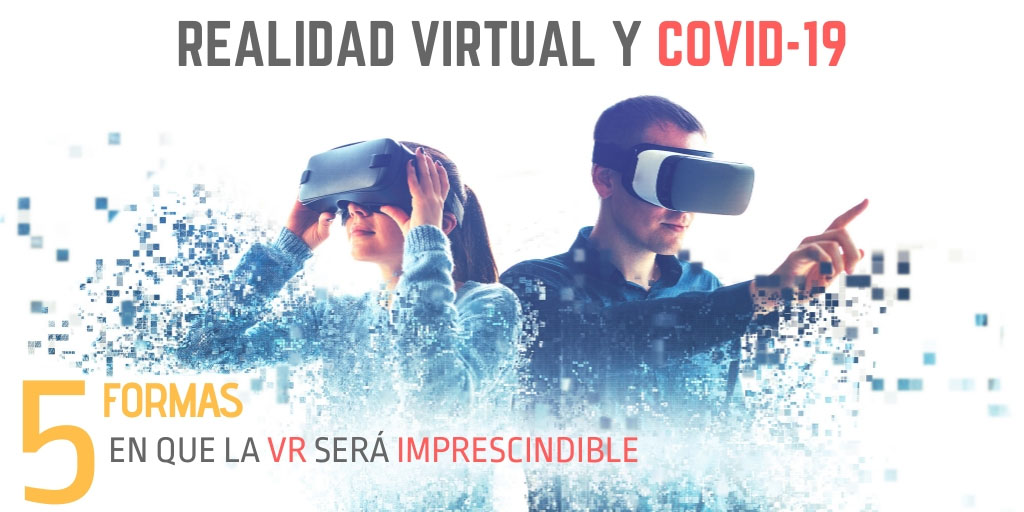
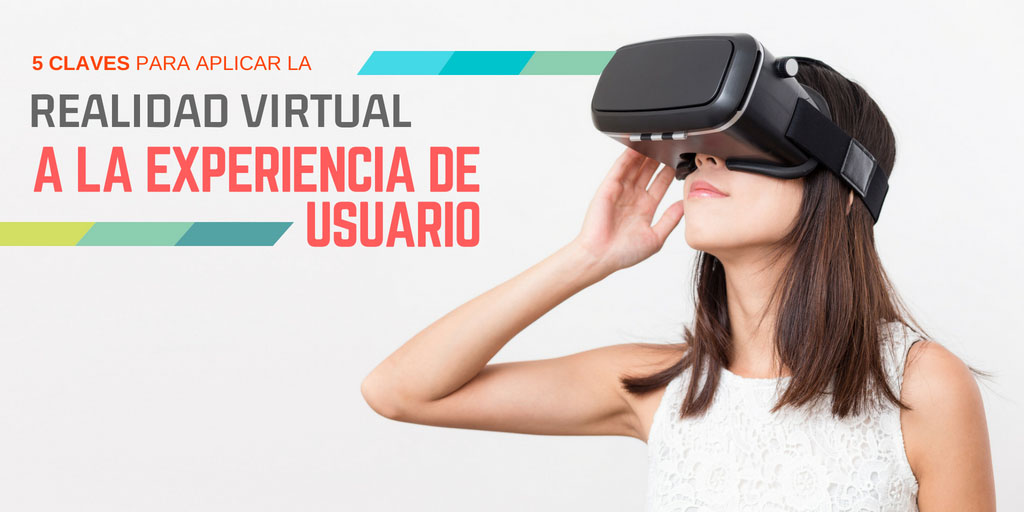
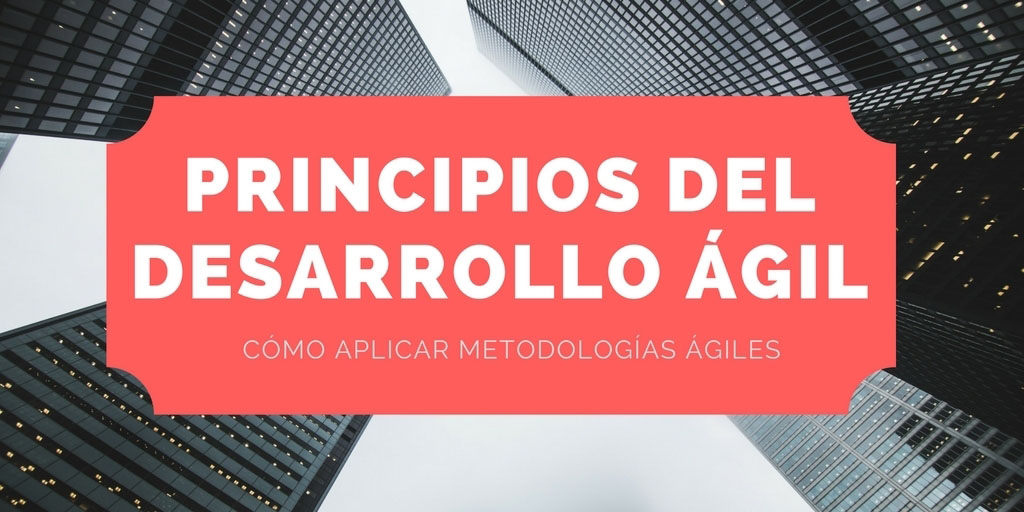
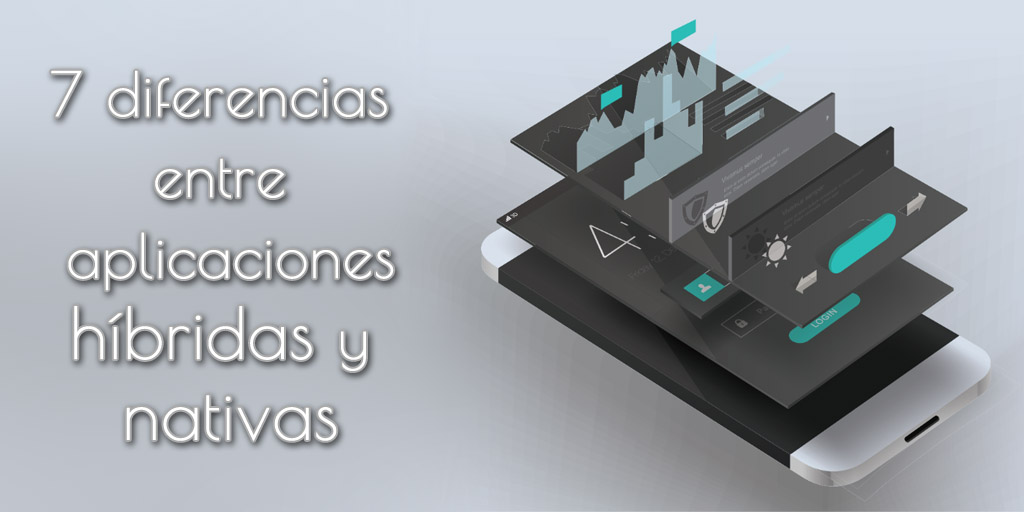
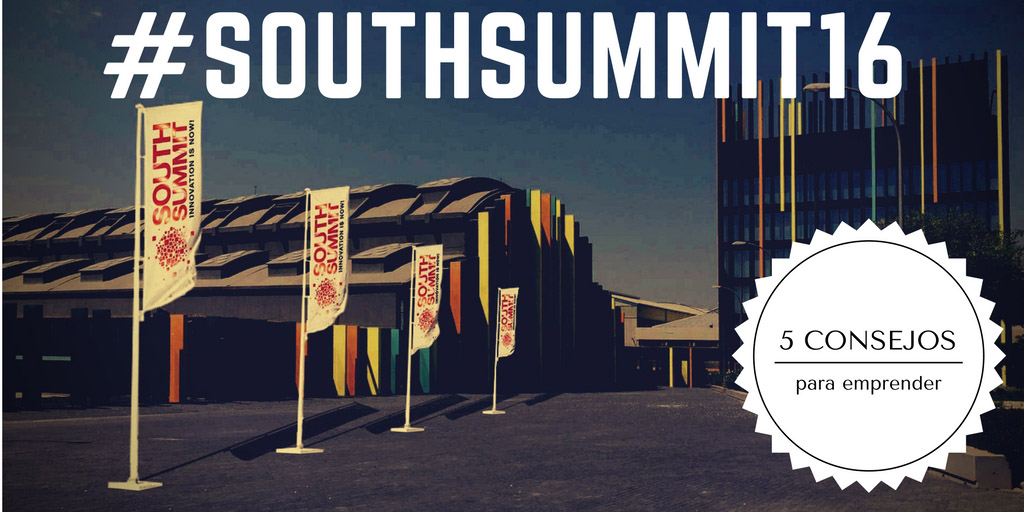
Sé el primero en comentar